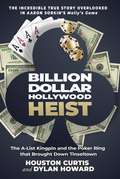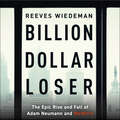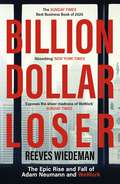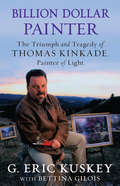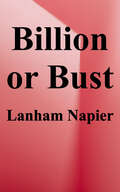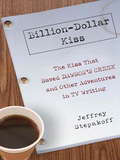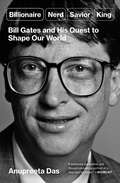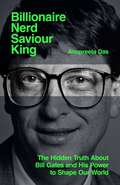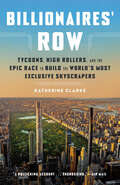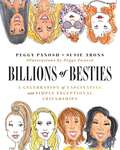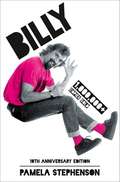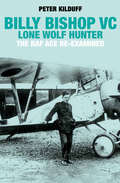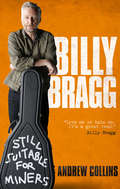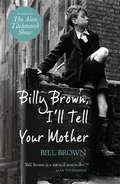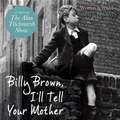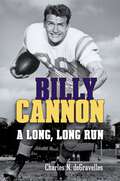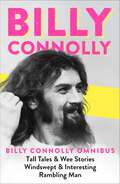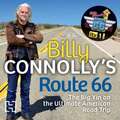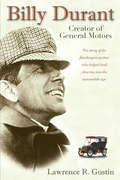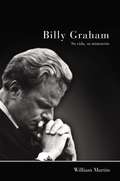- Table View
- List View
Billion Dollar Hollywood Heist: The A-List Kingpin and the Poker Ring that Brought Down Tinseltown
by Dylan Howard Houston Curtis&“Right out of the gate, the entire game was designed to empty the pockets of those rich, celeb-loving LA suckers.&”—Houston Curtis Leonardo DiCaprio. Alex Rodriguez. Tobey Maguire. Ben Affleck. Matt Damon. John Cassavetes. What do these people have in common? Not just fame and fortune; all these men are also alumni of the ultra-exclusive, high-stakes poker ring that inspired Aaron Sorkin&’s Oscar-nominated film, Molly&’s Game. But Houston Curtis, the card shark who co-founded the game with Tobey Maguire, knows that Sorkin&’s is the whitewashed version. In Billion Dollar Hollywood Heist, Curtis goes all-in, revealing the true story behind the game. From its origins with Maguire to staking DiCaprio&’s first game, installing Molly Bloom, avoiding the hookers and blow down the hall, and weathering the FBI investigation that left Curtis with a lien on his house, this is the no-holds-barred account of the world&’s most exclusive Texas Hold &’Em game from the man who started it—with all the names and salacious details that Molly&’s Game left out. With the insider appeal of Rounders, more A-listers than Ocean&’s 11, and the excitement of The Sting, Billion Dollar Hollywood Heist is the untold, insider&’s story that makes Molly&’s Game look tame.
Billion Dollar Loser: A Sunday Times Book of the Year
by Reeves WiedemanThe inside story of the rise and fall of WeWork, showing how the excesses of its founder shaped a corporate culture unlike any otherChristened a potential savior of Silicon Valley's startup culture, Adam Neumann was set to take WeWork, his office share company disrupting the commercial real estate market, public, cash out on the company's 47 billion dollar valuation, and break the string of major startups unable to deliver to shareholders. But as employees knew, and investors soon found out, WeWork's capital was built on promises that the company was more than a real estate purveyor, that in fact it was a transformational technology company.Veteran journalist Reeves Weideman dives deep into WeWork and it CEO's astronomical rise, from the marijuana and tequila-filled board rooms to cult-like company summer camps and consciousness-raising with Anthony Kiedis. Billion Dollar Loser is a character-driven business narrative that captures, through the fascinating psyche of a billionaire founder and his wife and co-founder, the slippery state of global capitalism.(P) 2020 Hachette Audio
Billion Dollar Loser: The Epic Rise and Fall of WeWork
by Reeves Wiedeman**The Sunday Times Best Business Book of the Year 2020**'A satisfying ticktock of the company's rapid rise and crash, culminating in its disastrous I.P.O. in 2019 and Neumann's ouster.' New York Times'This absorbing book exposes the sheer madness of WeWork: not just its founder Adam Neumann's extreme hubris, but why so many wiser minds bought into the fairytale.' Sunday TimesThe inside story of the rise and fall of WeWork, showing how the excesses of its founder shaped a corporate culture unlike any other.__________In its earliest days, WeWork promised the impossible: to make the workplace cool.Adam Neumann, an immigrant determined to make his fortune in the United States, landed on the idea of repurposing surplus New York office space for the burgeoning freelance class. Over the course of ten years, WeWork attracted billions of dollars from some of the most sought-after investors in the world, while spending it to build a global real estate empire.Based on more than two hundred interviews, Billion Dollar Loser chronicles the breakneck speed at which WeWork's CEO built and grew his company. Culminating in a day-by-day account of the five weeks leading up to WeWork's botched IPO and Neumann's dramatic ouster, Reeves Wiedeman exposes the story of the company's desperate attempt to secure the funding it needed in the final moments of a decade defined by excess.With incredible access and piercing insight into the company, Billion Dollar Loser tells the full, inside story of WeWork and its CEO Adam Neumann who together came to represent the most audacious, and improbable, rise and fall in business.__________A Sunday Times Best Business Book of the YearFortune Best Book of the YearNew York Times' Books to Watch For in OctoberWIRED Books to Read This FallBloomberg's Nonfiction Title to Know this FallNewsweek's Must Read Fall NonfictionPublishers Weekly Top Ten for Business & EconomicsInsideHook's Best Books for OctoberLike John Carreyrou's Bad Blood and Mike Isaac's Super Pumped before it, Billion Dollar Loser traces the turmoil at a startup driven by a charismatic, arrogant founder.'A frisky dissection of how a rickety real-estate leasing company tricked the world into seeing it as an immensely valuable, society-shifting tech unicorn.' WIRED
Billion Dollar Loser: The Epic Rise and Spectacular Fall of Adam Neumann and WeWork
by Reeves Wiedeman&“Vivid, carefully reported drama that readers will gulp down as if it were a fast-paced novel&” (Ken Auletta) ꟷ the inside story of WeWork and its CEO, Adam Neumann, which tells the remarkable saga of one of the most audacious, and improbable, rises and falls in American business history In its earliest days, WeWork promised the impossible: to make the American work place cool. Adam Neumann, an immigrant determined to make his fortune in the United States, landed on the idea of repurposing surplus New York office space for the burgeoning freelance class. Over the course of ten years, WeWork attracted billions of dollars from some of the most sought-after investors in the world, while spending it to build a global real estate empire that he insisted was much more than that: an organization that aspired to nothing less than "elevating the world's consciousness." Moving between New York real estate, Silicon Valley venture capital, and the very specific force field of spirituality and ambition erected by Adam Neumann himself, Billion Dollar Loser lays bare the internal drama inside WeWork. Based on more than two hundred interviews, this book chronicles the breakneck speed at which WeWork&’s CEO built and grew his company along with Neumann&’s relationship to a world of investors, including Masayoshi Son of Softbank, who fueled its chaotic expansion into everything from apartment buildings to elementary schools. Culminating in a day-by-day account of the five weeks leading up to WeWork&’s botched IPO and Neumann&’s dramatic ouster, Wiedeman exposes the story of the company&’s desperate attempt to secure the funding it needed in the final moments of a decade defined by excess. Billion Dollar Loser is the first book to indelibly capture the highly leveraged, all-blue-sky world of American business in President Trump&’s first term, and also offers a sober reckoning with its fallout as a new era begins.
Billion Dollar Painter: The Triumph and Tragedy of Thomas Kinkade, Painter of Light
by Bettina Gilois G. Eric KuskeyThe unbelievable true story of artist Thomas Kinkade, self-described "Painter of Light,” and the dramatic rise -and fall-of his billion-dollar gallery and licensing business. He was just one man, but Thomas Kinkade ultimately made more money from his art than every other artist in the history of the world combined. His sentimental paintings of babbling brooks, rural churches surrounded by brilliant fall foliage, and idyllic countryside cottages were so popular in the 1990s that one out of every twenty homes in America owned one of his prints. With the help of two partners-a former vacuum-cleaner salesman and an ambitious junior accountant who fancied himself a businessman-Kinkade turned his art into a billion-dollar gallery and licensing business that traded on the NYSE before it collapsed in 2006 amid fraud accusations. One part a fascinating business story about the rise, and demise, of a financial empire born out of divine inspiration, one part a dramatic biography, Billion Dollar Painter is the account of three nobodies who made it big. One of them was a man who, despite being a devout Christian who believed his artwork was a spiritual force that could cure the sick and comfort the poor in spirit, could not save his art empire, or himself. Eric Kuskey, former colleague of Thomas Kinkade's and close friend until the artist’s death in 2012, tells Kinkade’s story for the first time-from his art’s humble beginnings on a sidewalk in Carmel, California, to his five-house compound in Monte Sereno. It’s a tale of addiction and grief, of losing control, and ultimately, of the price of our dreams.
Billion or Bust!: Growing a Tech Company in Texas
by Lanham NapierAs president and then CEO of cloud provider Rackspace, Lanham Napier grew the company from $5 million to over $1 billion in revenues and $5 billion in market value while creating thousands of jobs. Under his leadership, especially growing its trademarked, high-quality customer service, Fanatical Support, Rackspace gained thousands of customers and industry dominance. <p><p>A lifelong Texan, Lanham grew the company in his home state, overseeing the development of phenomenal new headquarters (a converted mall) in San Antonio and leading the company's IPO. Further, he obsessed over how to increase employee engagement, and he exuberantly succeeded in his goal. But, when Microsoft, Amazon, and Google entered the industry in force, everything changed . . . including Lanham's relationship with Rackspace executives and the company's board of directors. <p><p>Lanham believed he had three options for leading the Rackspace response to the intense competition. But in fact, the board showed him that there was a fourth option he had never even considered. <p><p>Lanham Napier is an entrepreneur, innovator, investor, and Texan. He and his team at his investment fund, BuildGroup, believe in providing smart capital to passionate entrepreneurs who want to build companies for the long haul. Lanham developed his ideas about risk capital as a boy seeing family members and others who found themselves unable to gain access to risk capital (or, in many cases) any capital. He then deepened those ideas through his work as CEO raising money for and leading the IPO of Rackspace. Lanham grew up a proud Texan, enamored with the state climate, history, diversity, friendliness, and traditions. Also in his adolescence, Lanham developed a driving desire to improve the world through creating jobs for people. In special sections of the book, Lanham discuss the benefits and drawbacks of growing the company outside Silicon Valley and major tech centers.
Billion-Dollar Kiss
by Jeffrey StepakoffNow in paperback, the riveting behind-the-scenes look at how television shows are really created, from a successful writer-producerWhen Jeffrey Stepakoff was graduating with an MFA in playwriting, he imagined a life in theater. Writing for TV didn't even cross his mind. But he ended up in L. A. in the late eighties, when television writers were experiencing a gold rush. After the billion-dollar syndication of Seinfeld, the mania for scripted entertainment made the TV writer a hot commodity. Weaving his personal narrative with a history of television, Stepakoff shows what it's like to have a story idea one week and then have it seen by millions a week later. He also takes us inside the industry to explore the problems of media consolidation, interference by executives, lack of diversity, and what reality television is doing to quality scripted television.
Billionaire, Nerd, Savior, King: Bill Gates and His Quest to Shape Our World
by Anupreeta DasFrom the finance editor of The New York Times, an examination of Bill Gates—one of the most powerful, fascinating, and contradictory figures of the past four decades—and an eye-opening exploration of our national fixation on billionaires.Few billionaires have been in the public eye for as long, and in as many guises, as Bill Gates. At first heralded as a tech visionary, the Microsoft cofounder next morphed into a ruthless capitalist, only to change yet again when he fashioned himself into a global do-gooder. Along the way, Gates forever influenced how we think about tech founders, as the products they make and the ideas they sell continue to dominate our lives. Through the Bill & Melinda Gates Foundation, he also set a new standard for high-profile, billionaire philanthropy. But there is more to Gates&’s story, and here, Das&’s revelatory reporting shows us that billionaires have secrets and philanthropy can have a dark side. Drawing upon hundreds of interviews with current and former employees of the Gates Foundation, Microsoft, academics, nonprofits, and those with insight into the Gates universe, Das delves into Gates&’s relationships with Warren Buffett, Jeffrey Epstein, Melinda French Gates, and others, to uncover the truths behind the public persona. In telling Gates&’s story, Das also provides a new way to think about how billionaires wield their power, manipulate their image, and pursue philanthropy to become heroes, repair damaged reputations, and direct policy to achieve their preferred outcomes. Insightful, illuminating, and timely, Billionaire, Nerd, Savior, King is an important story of money and government, wealth and power, and media and image, and the ways in which the world&’s richest people hold us in their thrall.
Billionaire, Nerd, Saviour, King: The Hidden Truth About Bill Gates and His Power to Shape Our World
by Anupreeta DasBill Gates is one of the most powerful figures of the past four decades. But the world-famous public image he has so carefully crafted is not the whole truth. In this explosive new book, Anupreeta Das (finance editor of the New York Times) takes you behind the façade. From his early years, when he was a divisive figure in the burgeoning tech industry, we see the Microsoft co-founder morph into a ruthless capitalist, only to change yet again when he fashions himself into a global do-gooder. But as Das&’s revelatory reporting shows us: billionaires have secrets and philanthropy can have a dark side. Drawing upon hundreds of interviews with current and former employees of the Gates Foundation, Microsoft, and those with insight into the Gates universe, Das delves into Gates&’s relationships with Warren Buffett, Jeffrey Epstein, Melinda French Gates and others to uncover the man behind the persona. In telling Gates&’s story, Das also provides a new way to think about how billionaires wield their influence, manipulate their image and pursue philanthropy to achieve their own ends.Billionaire, Nerd, Saviour, King is a gripping story of wealth, power and reputation; it will open your eyes to the ways in which the world&’s richest people hold us in their thrall.
Billionaires' Row: Tycoons, High Rollers, and the Epic Race to Build the World's Most Exclusive Skyscrapers
by Katherine ClarkeA fly-on-the-wall account of the ferocious ambition, greed, and financial one-upmanship behind the most expensive real estate in the world: the new Manhattan megatowers known as Billionaires&’ Row—from a staff reporter at The Wall Street Journal&“Deeply informative, delightfully entertaining, and addictively readable.&”—Diana B. Henriques, bestselling author of The Wizard of LiesTo look south and skyward from Central Park these days is to gaze upon a physical manifestation of tens of billions of dollars in global wealth: a series of soaring spires stretching from Park Avenue to Broadway. Known as Billionaires&’ Row, this set of slender high-rise residences has transformed the skyline of New York City, thanks to developer-friendly policies and a seemingly endless gush of cash from tech, finance, and foreign oligarchs. And chances are most of us will never be invited to step inside.In Billionaires&’ Row, Katherine Clarke reveals the captivating story of how, in just a few years, the ruthless real-estate impresarios behind these &“supertalls&” lining 57th Street turned what was once a run-down strip of Midtown into the most exclusive street on Earth, as legendary Trump-era veterans went toe-to-toe with hungry upstart developers in an ego-fueled &“race to the sky.&” Based on far-reaching access to real estate&’s power players, Clarke&’s account brings readers inside one of the world&’s most cutthroat industries, showing how a combination of ferocious ambition and relentless salesmanship has created a new market of $100 million apartments for the world&’s one-percenters—units to live in or, sometimes, just places to stash their cash.Filled with eye-popping stories that bring the new era of extreme wealth inequality into vivid relief, Billionaires&’ Row is a juicy, gimlet-eyed account of the genius, greed, and financial one-upmanship behind the most expensive real estate in the world—a stranger-than-fiction saga of broken partnerships, broken marriages, lawsuits, and, for a few, fleeting triumph.
Billions of Besties: A Celebration of Fascinating and Simply Exceptional Friendships
by Peggy Panosh Susie AronsThis beautifully illustrated and joyful tribute celebrates famous friendships (both real and fictional) and proves that there is no relationship more important than friendship. Our best friends are our soulmates. They understand us when no one else does, lift us up, and bring out the best in us. It&’s a relationship based on a bond that can&’t always be described, but is always magical. Billions of Besties shines a light on some of the most engaging, funny, inspiring, and sometimes unexpected sets of friends. In this gorgeous and playfully illustrated volume, creators and besties Peggy and Susie highlight more than 100 besties, both real and fictional, from all walks of life. From the comedic powerhouse of Amy Poehler and Tina Fey, to the unexpected camaraderie between RGB and Antonin Scalia, the glamourous friendship between Anna Wintour and Roger Federer, or the fictional ride-or-die bond between Thelma and Louise, this book is a timeless salute to friendship in all its forms. Uplifting and charming, Billions of Besties celebrates the power and vitality of friendship—from bromances to work wives—reminding us that when we have each other&’s backs, we have the power to change the world.
Billy
by Pamela StephensonBilly Connolly has worked his way to the top from his working class roots. Billy has proved beyond doubt his versatility and sheer determination. Pamela writes about him - a highly talented musician, actor and comedian.
Billy Bishop VC Lone Wolf Hunter: The RAF Ace Re-Examined
by Peter KilduffA “superb” look at one of the Great War’s most storied combat pilots and his legendary solo missions, with never-before-published photos (Barrett Tillman). William Avery Bishop is recognized as the British Empire’s highest-scoring WWI ace, credited with seventy-two combat victories. Overall, he ranked behind only Manfred von Richthofen and René Fonck. This remarkable man’s story—his personal courage, daring, and superior marksmanship—has been detailed in books and articles, but here author Peter Kilduff investigates the untold story, bringing new light to missions and kills that have been previously steeped in controversy through evenhanded, thorough research and forensic evidence. As so many of Bishop’s victories were achieved during solo combat, the author examines and scrutinizes German, British, and Canadian archival sources, Bishop’s private correspondence, and accounts by friends and foes. Such an approach provides as complete an account as possible, in a valuable work featuring many previously unpublished photographs. “Kilduff is not the first to conduct such an inquiry into Bishop’s claim of 72 victories, but his book is by far the best researched . . . expertly laid out, with photos of the aircraft mentioned by Bishop, particularly the German types. Kilduff has done a marvelous and subtle job of showing how a real hero became larger than life.” —Aviation History
Billy Bishop: Canadian Hero
by Dan MccafferyBilly Bishop is Canada's greatest air ace of all time. He was almost thrown out of military college for cheating, but he went on to become the most famous of the First World War fighter pilots.<P> Though he became a darling of the press, Bishop grew tired of the carnage of the war.<P> Author Dan McCaffery offers a lively, compelling portrait of Bishop. His meticulous research has settled, once and for all, the controversy over whether Bishop lied to win his Vicotria Cross.<P> Warts and all, Bishop emerges as a true Canadian hero.
Billy Bragg: Still Suitable for Miners
by Andrew Collins'Love me or hate me. It's a great read’ - Billy Bragg He was a punk. He was a soldier. He was a flag-waver for the Labour Party and the miners. He is Billy Bragg, passionate protest folk singer and tireless promoter of political and humanitarian causes around the world. His life encapsulates so much about his generation: born in the late ’50s, passions forged by punk, politics shaped by Thatcherism, career inspired by engagement, hope provided by the end of the Cold War and ideology galvanised by what he sees as a ‘post-ideological’ twenty-first century. He adapts to survive: serious about compassion and accountability, he likes a laugh too, and has never forgotten where he comes from.Still Suitable for Miners is the official Billy Bragg story, tracing his life, family and career at close range from Barking to the present day. This 20th anniversary edition has been updated to include the rise of Corbyn, the unfolding of Brexit, Billy’s reclamation of skiffle and his overtures into Americana.
Billy Brown, I'll Tell Your Mother
by Bill BrownA riveting and hugely entertaining memoir of post-war London told through the eyes of a hilariously opportunistic little boy.By the time he was ten years old, Billy Brown was running a successful little business on the black market: whatever you needed, from bricks and firewood to dress material or machetes, Billy Brown could get it - or knew a man who could. And, for the right price, he would deliver it direct to your door in an old carriage pram.With energy and insight, Billy Brown paints a vivid and lively picture of Britain emerging from the ruins of the war, the hunger for opportunity, the growing pace of modernisation and the pride and optimism that held communities together. Londoners were intent on getting themselves back on their feet, and it provided the perfect opportunity for a boy with ambition and a lively imagination.Born in Brixton, south London, in 1942, Billy Brown was a lovable scamp with a nose for mischief. Left to his own devices while both his parents went out to work, if there was trouble to be had Billy would be in the thick of it. Ignoring the shaking of fists from his neighbours, his mother's scoldings and the regular thwack of the cane on his bottom at school, Billy wheeled and dealed, charmed Woolies' Girls, planned coronation celebrations, ran circles around circus performers and persuaded villains to work on his terms.
Billy Brown, I'll Tell Your Mother
by Bill BrownA riveting and hugely entertaining memoir of post-war London told through the eyes of a hilariously opportunistic little boy.By the time he was ten years old, Billy Brown was running a successful little business on the black market: whatever you needed, from bricks and firewood to dress material or machetes, Billy Brown could get it - or knew a man who could. And, for the right price, he would deliver it direct to your door in an old carriage pram.With energy and insight, Billy Brown paints a vivid and lively picture of Britain emerging from the ruins of the war, the hunger for opportunity, the growing pace of modernisation and the pride and optimism that held communities together. Londoners were intent on getting themselves back on their feet, and it provided the perfect opportunity for a boy with ambition and a lively imagination.Born in Brixton, south London, in 1942, Billy Brown was a lovable scamp with a nose for mischief. Left to his own devices while both his parents went out to work, if there was trouble to be had Billy would be in the thick of it. Ignoring the shaking of fists from his neighbours, his mother's scoldings and the regular thwack of the cane on his bottom at school, Billy wheeled and dealed, charmed Woolies' Girls, planned coronation celebrations, ran circles around circus performers and persuaded villains to work on his terms.
Billy Brown, I'll Tell Your Mother
by Bill BrownBy the time he was ten years old, Billy Brown was running a successful little business on the black market: whatever you needed, from bricks and firewood to dress material or machetes, Billy Brown could get it - or knew a man who could. And, for the right price, he would deliver it direct to your door in an old carriage pram.With energy and insight, Billy Brown paints a vivid and lively picture of Britain emerging from the ruins of the war, the hunger for opportunity, the growing pace of modernisation and the pride and optimism that held communities together. Londoners were intent on getting themselves back on their feet, and it provided the perfect opportunity for a boy with ambition and a lively imagination.Born in Brixton, south London, in 1942, Billy Brown was a lovable scamp with a nose for mischief. Left to his own devices while both his parents went out to work, if there was trouble to be had Billy would be in the thick of it. Ignoring the shaking of fists from his neighbours, his mother's scoldings and the regular thwack of the cane on his bottom at school, Billy wheeled and dealed, charmed Woolies' Girls, planned coronation celebrations, ran circles around circus performers and persuaded villains to work on his terms.Read by Bill Brown(p) 2011 Orion Publishing Group
Billy Cannon: A Long, Long Run
by Charles N. DeGravellesBilly Cannon’s name, his image, and his remarkable athletic career serve as emblems for Louisiana State University, the Southeastern Conference, and college football. LSU’s only Heisman Trophy winner, Cannon led the Tigers to a national championship in 1958, igniting a love of the game in Louisiana and establishing a tradition of greatness at LSU.But like many stories of lionized athletes who rise to the status of legend, there was a fall—and in the case of Billy Cannon, also redemption. For the first time, Charles N. deGravelles reveals in full the thrilling highs and unexpected lows of Cannon’s life, in Billy Cannon: A Long, Long Run.Through conversations with Cannon, deGravelles follows the athlete-turned-reformer from his boyhood in a working-class Baton Rouge neighborhood to his sudden rush of fame as the leading high school running back in the country. Personal and previously unpublished stories about Cannon’s glory days at LSU and his stellar but controversial career in the pros, as well as details of his indictment for counterfeiting and his post-release work as staff dentist at Louisiana State Penitentiary at Angola, unfold in a riveting biography characterized by uncanny success, deep internal struggles, and a champion’s spirit that pushed through it all.
Billy Connolly Omnibus: Tall Tales and Wee Stories/Windswept & Interesting/Rambling Man
by Billy ConnollyTHREE TIMES THE LAUGHS: THE BEST OF BILLY CONNOLLY! 'Our greatest living comedian' Daily Mail'One of stand-up's great naturals. No one told a story better.' Guardian 'Furious, funny and foul mouthed' Sunday TimesTall Tales & Wee StoriesA collection of the very best of Billy's most famous routines including The Last Supper, Jojoba Shampoo, Incontinence Pants and Shouting at Wildebeest. With an introduction and original illustrations by Billy throughout, it is an inspirational, energetic and riotously funny read, and a fitting celebration of our greatest ever comedian.Windswept & Interesting 'It's the first time I've done this. Other people have written about me - or for me - but this time it's just my own life in my own words'Billy's joyfully funny, frank and full autobiography - stuffed full of hard-earned wisdom as well as countless digressions on fishing, farting and the joys of dancing naked. It is an unforgettable, life-affirming story of a true comedy legend.Rambling ManBilly's unconventional travel memoir that criss-crosses the world, encapsulating a lifetime of incredible journeys and hundreds of fascinating encounters - from riding his trike down America's famous Route 66, building an igloo on an iceberg in the Arctic, playing elephant polo (badly) in Nepal and crashing his motorbike (more than once), to eating witchetty grubs in Australia, being serenaded by a penguin in New Zealand, and swapping secrets in a traditional Sweat Lodge ritual in Canada.
Billy Connolly Omnibus: Tall Tales and Wee Stories/Windswept & Interesting/Rambling Man
by Billy ConnollyTHREE TIMES THE LAUGHS: THE BEST OF BILLY CONNOLLY! 'Our greatest living comedian' Daily Mail'One of stand-up's great naturals. No one told a story better.' Guardian 'Furious, funny and foul mouthed' Sunday TimesTall Tales & Wee StoriesA collection of the very best of Billy's most famous routines including The Last Supper, Jojoba Shampoo, Incontinence Pants and Shouting at Wildebeest. With an introduction and original illustrations by Billy throughout, it is an inspirational, energetic and riotously funny read, and a fitting celebration of our greatest ever comedian.Windswept & Interesting 'It's the first time I've done this. Other people have written about me - or for me - but this time it's just my own life in my own words'Billy's joyfully funny, frank and full autobiography - stuffed full of hard-earned wisdom as well as countless digressions on fishing, farting and the joys of dancing naked. It is an unforgettable, life-affirming story of a true comedy legend.Rambling ManBilly's unconventional travel memoir that criss-crosses the world, encapsulating a lifetime of incredible journeys and hundreds of fascinating encounters - from riding his trike down America's famous Route 66, building an igloo on an iceberg in the Arctic, playing elephant polo (badly) in Nepal and crashing his motorbike (more than once), to eating witchetty grubs in Australia, being serenaded by a penguin in New Zealand, and swapping secrets in a traditional Sweat Lodge ritual in Canada.
Billy Connolly's Route 66: The Big Yin on the Ultimate American Road Trip
by Billy ConnollyFollow much-loved Scottish comedian and bestselling author Billy Connolly across Route 66, on this unforgettable journey filled with music, modern history and hilarious stories.Billy Connolly first dreamed of taking a trip on the legendary Route 66 when he heard Chuck Berry belting out one of the greatest rock 'n' roll records of all time - and now he's finally had the chance to do it. Travelling every one of its 2,278 miles on his custom-make motorbike, Billy's journey takes him past many of the best-known icons in the US: the Gateway Arch in St Louis, Monument Valley and the Grand Canyon, and the funky neon-lit gas stations and diners that once lined the route.Billy also has the chance to get to know the people who call it home, from Mervin the Amish carpenter, to fellow banjo enthusiast and obsessive instrument collector Rob, to Angel, one of the many people determined to keep the spirit of the Mother Road alive. Funny, touching and inspiring in equal measure, the tales he gathers on the way tell the story of modern America.With his unrivalled instinct for a good story, and the gregariousness that has made him a comedy legend, Billy Connolly is the ultimate guide to the ultimate road trip.
Billy Durant: Creator of General Motors
by Lawrence R. GustinWhat explains Billy Durant's powerful influence on the auto industry during its early days? And why, given Durant's impact, has he been nearly forgotten for decades? In search of answers to these questions, Lawrence Gustin interviewed Durant's widow, who provided a wealth of previously unpublished autobiographical notes, letters, and personal papers. Gustin also interviewed two of Durant's personal secretaries and others who had known and worked with the man who created General Motors. The result is the amazing account of the mastermind behind what would become, as the twentieth century progressed, the world's largest company.
Billy Graham
by Marshall FradyMarshall Frady's epic biography of the most prominent and popular religious leader in America. With unparalleled access to Billy Graham and his family and associates, Frady presents an intimate and multifaceted portrait of the man, from his childhood upbringing in the midlands of North Carolina to his ascent to national recognition. Frady's narrative encompasses the man, his spiritual mission, and his political involvements and bears witness to the preeminent position Graham has held in American life for more than five decades. This remains the most compelling and definitive biography of him to date.
Billy Graham - Su vida, su ministerio
by William C. MartinEste libro celebra a una de las grandes luminarias del siglo veinte. Este libro cautivador y comprehensivo da a los lectores religiosos o seculares una mejor comprensión del evangelista más exitoso de la historia moderna, y del movimiento que él dirigió por más de cincuenta años.El libro hace una contribución vital al legado de Billy Graham y nos permite entender por qué sus palabras, acciones y personalidad le ganaron el aprecio de papas y predicadores, reyes y presidentes, y millones de cristianos virtualmente en toda nación y cultura por todo el mundo, por más de medio siglo.Esta biografía Graham mismo pidió y apreció por su enfoque proporcionado pero franco. En este relato cuidadosamente documentado, eminentemente equitativo, y bien escrito, William Martin plantea y contesta preguntas clave en cuanto al carácter, contribuciones e influencia de Graham a la escena religiosa del mundo. Siguiendo la vida y ministerio de Graham, desde sus raíces rurales y religiosas en Carolina del Norte, a su lugar como el estadista más veterano del evangelicalismo estadounidense, siguiendo tanto sus triunfos como sus tribulaciones, Martin muestra el carácter multidimensional del hombre que ha llegado a ser una de las personas más admiradas del mundo. Este cautivador y comprehensivo libro ofrece una comprensión detallada del evangelista más exitoso de la historia moderna, y del movimiento que él dirigió por más de cincuenta años.
